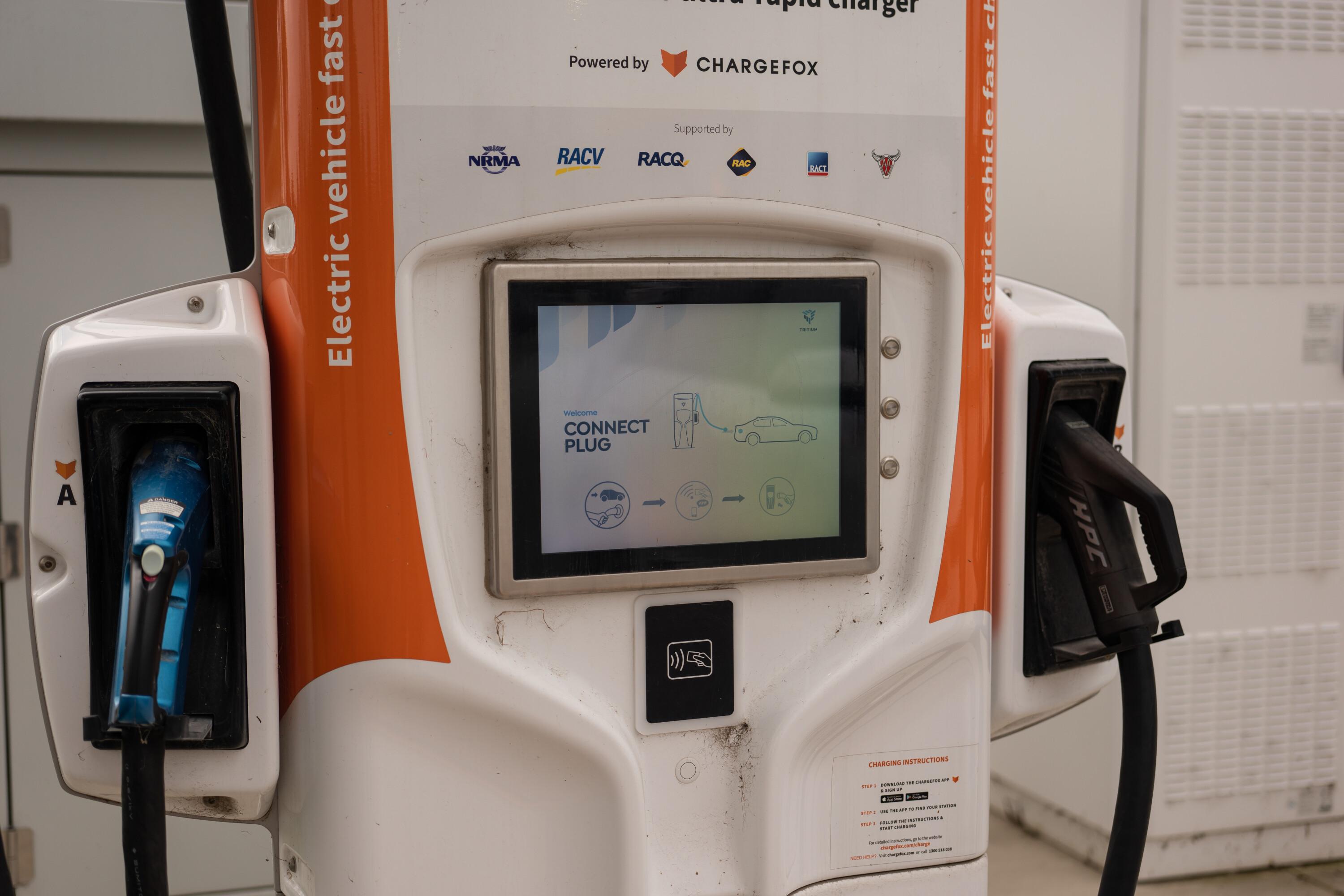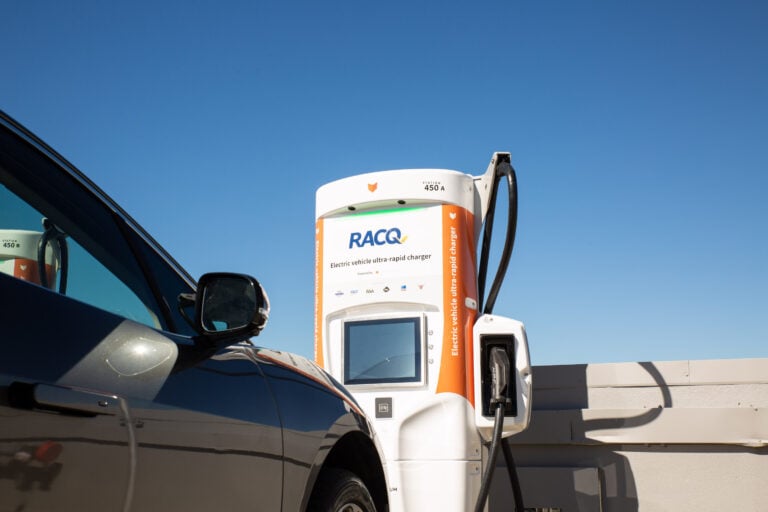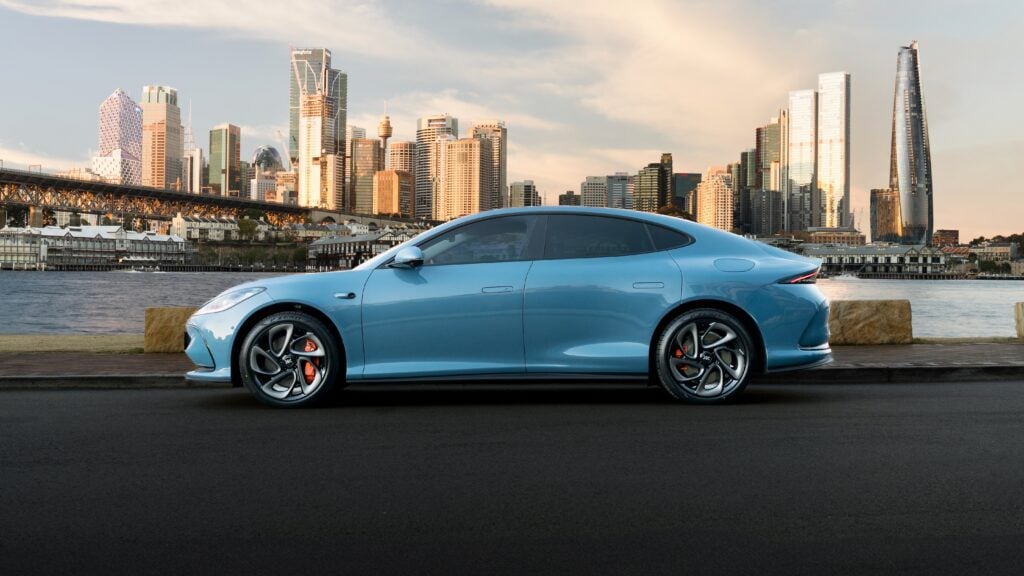
“You might say we were blind, but there were no alternatives at the time.”
Snapshot
- Increased load, outdated units are key causes to unreliable public EV chargers
- Extended repair process and limited local parts supply
- New more dependable, modular stalls are coming online, as networks rapidly expand
- Home charging still ideal, rarely need to use public infrastructure
It’s no secret that public EV charging stations can be faulty, out-of-order, and take weeks to repair – which can be frustrating for owners.
But, why are they unreliable?
While the increasing number of public EV charging stalls should help encourage Australians to make the switch, infrastructure must also be reliable and accessible for owners to keep driving an EV.
But, as EV sales continue to grow, Australians who can’t plug in at home or work are choosing to depend on public chargers. And, even when owners can recharge at home, public charging is a must when embarking on a long holiday road trip.
Therefore, out-of-order EV chargers can be a major pain point – in contrast to the traditional fuel pumps that have largely proven reliable and almost ubiquitous thanks to a decades-long headstart.
JUMP AHEAD
- ? What causes faulty EV chargers?
- ? Why do repairs take so long?
- ? Is it just an exaggerated issue?
- ? When will EV chargers become reliable?
- ? Time to make the electric switch?

? What causes faulty EV chargers?
Key points
- Older first-generation stations weren’t designed for todayu2019s load
- Australian weather and nature can be challenging
- However, new modular stalls are being installed and replacing old units
Chargefox chief executive John Sullivan told WhichCar that public EV charging stations fail at times due to increased use, external weather conditions, and outdated units.
“The biggest issue we have is that the original [Chargefox-owned] locations use the first-generation chargers. Over time, the equipment has aged… and the frequency by which charging sessions happen in key locations has increased dramatically [with more EV owners],” Sullivan said.
“Some of the older equipment – no matter how much you maintain them, no matter how many new parts you put in – it cannot cope with that kind of increased load [including larger EV batteries].
“Now, you might say we were blind, but there were no alternatives at the time [when founded in 2017]… Now, there’s newer generation [modular] equipment – much more reliable, much more maintainable, and they’re designed for Europe and US markets where the demands are much greater.”
“No matter how much you maintain them, no matter how many new parts you put in – it cannot cope with that kind of increased load”

Sullivan confirmed to WhichCar that the network’s 21 wholly-owned and operated locations will be completely replaced with more reliable modular stalls in the next year – in a similar move to corporate counterpart NRMA.
It currently uses a mix of Tritium RT50 (50kW), PK350 (350kW), and ABB Terra HP (350kW) DC stations – with the former dating back to 2012.
It’s worth noting that, judging by public sentiments and experience, charging providers, such as Evie Networks, BP Pulse and Ampol AmpCharge, also use the same manufacturers – but often use newer stations that don’t fault as often and are typically restored quicker than Chargefox.

The network’s CEO added “Australia is the most inhospitable location to put chargers in” since animals, such as ants, can crawl in and leave chemical trails to short-circuit the boards – an issue that’s currently prevalent in Western Australia.
While sealing components help, Sullivan told WhichCar that high weather temperatures can also affect the charging equipment – especially in summer and rural regions.
“If it’s a cable, something will chew it. If the remoteness isn’t going to get it, the animals will, and then the unreliability of the electricity network or mobile network,” Sullivan said.
“Australia is the most inhospitable location to put chargers in”

? Why do repairs take so long?
Key points
- Repairing a station is an arduous and prolonged process
- Some owners donu2019t prioritise maintenance
- In some cases, manufacturers advise a complete replacement is required
EV charging stations are complex high-voltage machines. When they are out-of-order, some locations have reportedly taken weeks – if not months – to repair.
Busy locations, such as Chargefox-owned stations in Melbourne Airport West, Sydney’s Zetland and Goulburn near Canberra, have repeatedly been criticised by users and the media for extended repair times on the first-generation Brisbane-made Tritium stalls.
Chargefox CEO John Sullivan revealed to WhichCar that repairing a charging station is an arduous process – exacerbated by limited local parts supply, component shortages, and an extended diagnosis-to-repair cycle that regularly takes two or three attempts.
“That’s why the [repair] time takes so bloody long,” Sullivan said.

⏳ The EV charger repair process (for Chargefox-owned stations)
- Charging provider (eg: Chargefox) identifies the issue – via charger software or customer feedback
⌁ - Provider notifies chosen maintenance company, who then book a time with the charging station manufacturer (eg: Tritium) to conduct remote diagnostics
⌁ - Manufacturer highlights the first fault found (current stalls cannot do a comprehensive overall diagnostic)
⌁ - Maintenance company orders part/s to repair, via the charging provider, with the station manufacturer
⌁ - Wait for part delivery to maintenance company or central distribution location (pending component supply shortages)
⌁ - Maintenance company goes to the site to repair the stall with the part/s
⌁ - Maintenance company books another time with the charging station manufacturer to conduct another remote diagnostic
⌁ - Manufacturer (regularly) finds another fault
⌁ - Process repeats until the station is completely fixed and restored – often after three cycles and several weeks

- Charging provider (eg: Chargefox) identifies the issue – via charger software or customer feedback ⌁
- Provider notifies chosen maintenance company, who then book a time with the charging station manufacturer (eg: Tritium) to conduct remote diagnostics ⌁
- Manufacturer highlights the first fault found (current stalls cannot do a comprehensive overall diagnostic) ⌁
- Maintenance company orders part/s to repair, via the charging provider, with the station manufacturer ⌁
- Wait for part delivery to maintenance company or central distribution location (pending component supply shortages) ⌁
- Maintenance company goes to the site to repair the stall with the part/s ⌁
- Maintenance company books another time with the charging station manufacturer to conduct another remote diagnostic ⌁
- Manufacturer (regularly) finds another fault ⌁
- Process repeats until the station is completely fixed and restored – often after three cycles and several weeks
However, Sullivan admits EV charging is not the primary business of some organisations and they may be slower on getting a repair quote. Then, the bill (sometimes around $20,000) may not be immediately feasible.
According to the Chargefox CEO, some charging station manufacturers have started establishing a local parts supply chain in Australia – but there are still few certified repaired businesses in Australia since they need to hold at least $150,000 worth of spare parts locally.
“Synergy bought spare parts for every single charger that they were going to put on the [Western Australian] network, and they warehouse them before they would put them in the ground,” Sullivan told WhichCar.
“They know the time taken to get spare parts and get them delivered and fixed is way too long… We [also] find that with Engie and most of the CPOs [charge point operators] on our part – they’re almost like buying double the number of chargers.”

“You also have to maintain it annually”
EVSE Australia – which retails, installs and maintains charging equipment – stocks parts in Sydney and Melbourne to fast-track repair times.
Its main manufacturer partner, Ocular, claims to have a failure rate of less than 2 per cent, with the “majority” of issues covered under warranty.
EVSE’s marketing head, James Greathead, told WhichCar that new charger owners are “often lax on maintenance after the initial win of installing” charging stations.
“A lot of people might think that it’s great to tick the box in terms of ESG [environmental, social, and governance] or corporate impact by installing a charger. But, you also have to maintain it annually,” Greathead said.
“One that can be really frustrating is the internet connection… [in order for the software] to send data and uptime alerts. So, the installation has to be right on the ethernet cabling when it’s first put in… that can save a lot of time.
“The whole [repair] process should really be completed with a charger back up and running within a week or two.”

Chargefox CEO John Sullivan said, in some cases, the manufacturer can’t remotely diagnose the issue and had advised them to disconnect the entire unit and ship it back for a physical inspection.
In other cases, it’s been even worse.
“We’ve been told by a manufacturer that two- or three-year-old equipment cannot be serviced anymore; we need to buy a brand new unit,” Sullivan told WhichCar.
“It costs about $50,000 a unit. We haven’t made $50,000 [from that charger]; we would be lucky to have made $10,000 on the unit in its lifetime of two years.
“So, the only means of resolving the issue is to take the charger out and buy a brand new one. And, in those cases, organisations are choosing not to buy particular brands of chargers and replace them with other brands.”
“We’ve been told by a manufacturer that two- or three-year-old equipment cannot be serviced anymore”
Moreton Bay-based EV charging station repair company, FutureDrive, which services parts of Queensland and New South Wales, declined to comment.

? Has faulty chargers been unfairly exaggerated?
Key points
- Home charging is recommended and far cheaper
- Rarely need to use public chargers, unless driving long distances
- Driving range more than enough for typical Australians
Electric car rideshare driver and owner of private transport business Ride4U, Nathan Merritt, said drivers should only need to use public infrastructure on a long-distance road trip.
“Speak to the body corporate [if you can’t charge at home or apartment]. If you can slow-charge the car at home, that is your best method for starting your day,” Merritt told WhichCar.
“Public charging sites are the most expensive way to charge your car – and it can get busy on weekends and public holidays. That’s why the media likes to portray massive queues at EV charging stations, but it only really applies to those that are doing interstate-type travel, which is not typical.”
“If you can slow-charge the car at home, that is your best method for starting your day”

Merritt, who has driven more than 220,000 kilometres in his 2021 Tesla Model 3 Standard Range, said 60 per cent of his charging is done at home.
He utilises free solar energy during the day and his electricity provider’s $0.08 per kilowatt-hour ultra-low EV tariff overnight – in contrast to public charging networks that generally cost between $0.40 to $0.70 per kWh.
As a commercial EV driver who travels nearly 8000km per month, Merritt sometimes needs to use public fast chargers when on a break and said the access to Tesla Superchargers gives him more confidence.
“I’ve driven from Brisbane to Melbourne – never had an issue using any of Tesla’s Supercharging sites. My options of reliable charging would not be as widely available [if I owned a non-Tesla EV],” Merritt told WhichCar.

? When will EV chargers become reliable?
There’s no denying that the number and reliability of public charging stations today need to significantly improve.
However, the wheels are already turning quickly in Australia now with the installation of newer charging stations from different brands – including Kempower, ABB and Delta Electronics – across a variety of networks such as Chargefox, Evie Networks, and BP Pulse.
Some charging providers have also replaced some sites with newer, more reliable modular Tritium units capable of outputting faster speeds and power sharing (charging two vehicles at the same time).
While the industry has previously focused on expanding rapidly in numbers, there’s also now a focus to improve repairs and access to parts locally.
Despite this, there is little to no barrier to making the electric vehicle switch now – if you can plug in at home since it’s the most convenient, reliable and cheapest way to recharge. EVs today already provide more than enough driving range for most Australians’ daily needs.
Chargefox CEO John Sullivan told WhichCar that public EV charging in Australia will dramatically expand and improve reliability within the next year.
“This is a new industry. We make mistakes. The industry as a whole has not set itself up well for the [EV] adoption rates that we’re getting today. Everybody in this industry feels it,” Sullivan said.
“Everybody’s network will be so much better… The problems we’re facing today will not be the problems we’re facing in a year’s time.”
“The industry as a whole has not set itself up well for the [EV] adoption rates that we’re getting today”

? Is it time to make the electric switch?
EVs are not for everyone (for now), but they are right for most.
Public charging availability, charging costs, and driving range remain key perceived issues. For more, check out our /Electric hub guides below.
We recommend
-
 Advice
AdviceHow long does it take to charge an electric car?
It’s a common question that can be complex to answer. We break down the charging times and limitations
-
 Advice
AdviceEV charging etiquette tips: Dos and don’ts
What’s right and wrong when it comes to public EV charging and queueing? Here’s your definitive etiquette guide
-
 News
NewsInterview: Chargefox chief discusses EV charging problems & promised improvements
Australia’s largest public EV charging network has developed a poor reputation with complaints by users and the media. WhichCar spoke to the Chargefox CEO to address the critics, accusations and misconceptions




